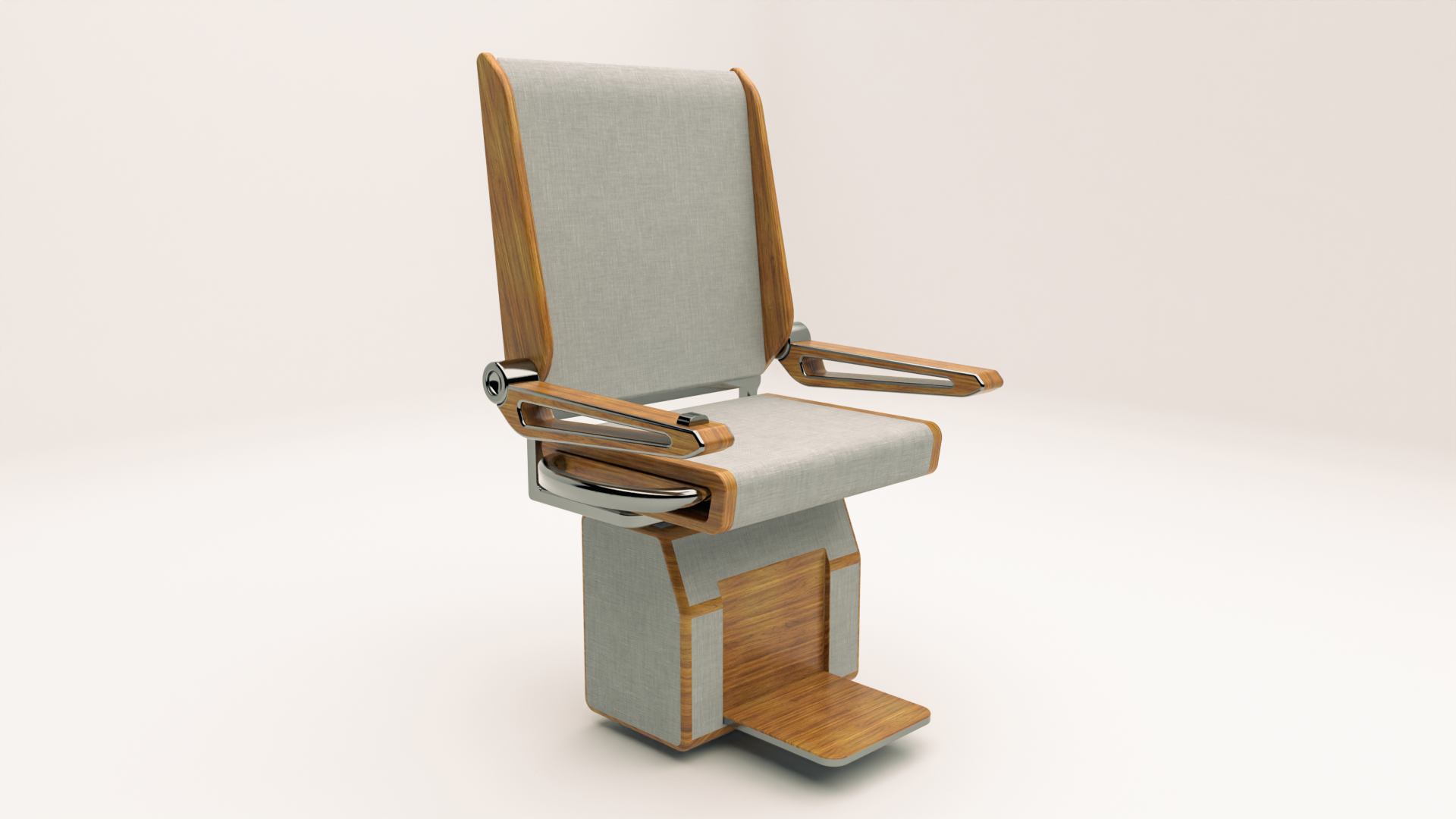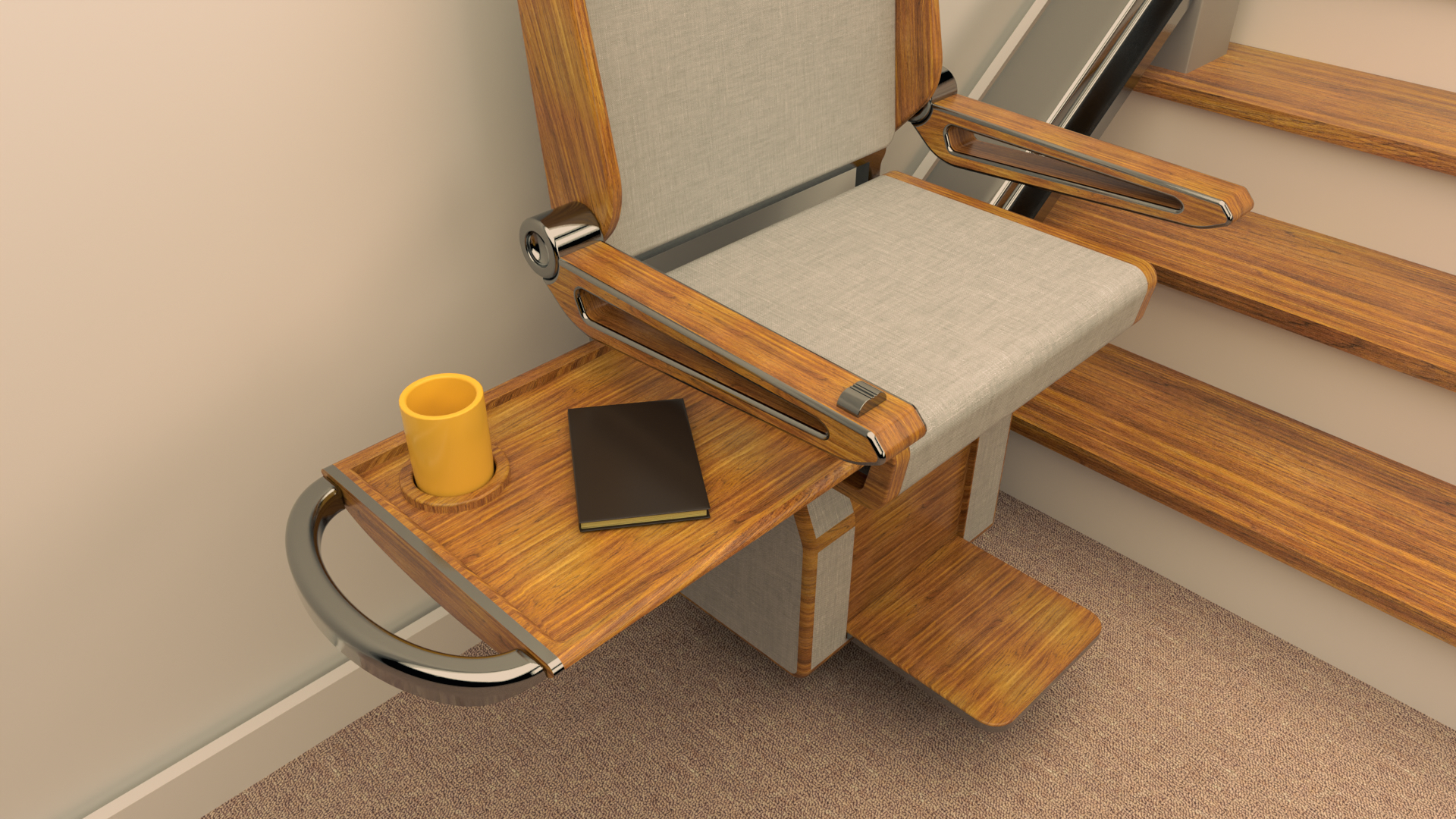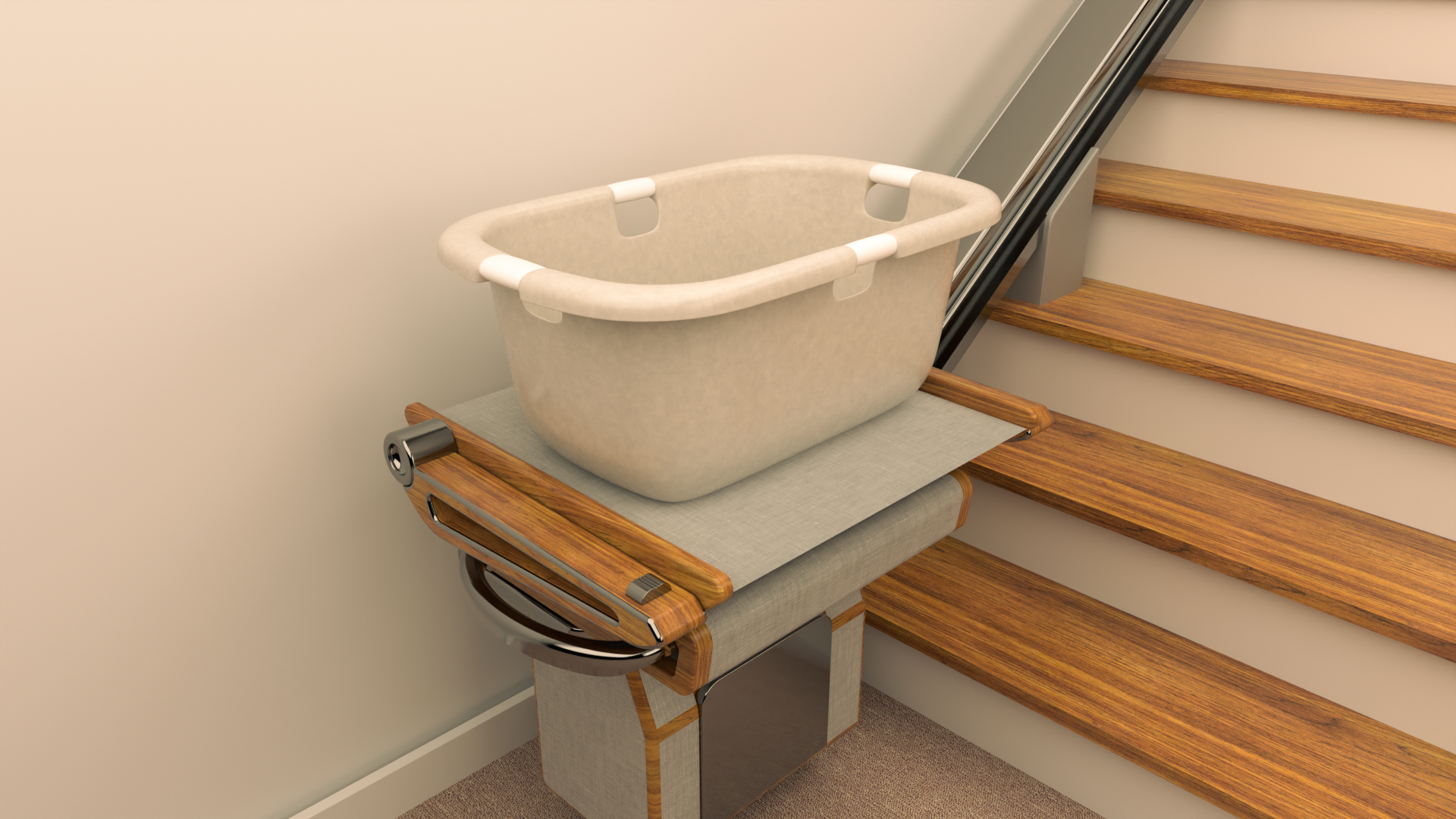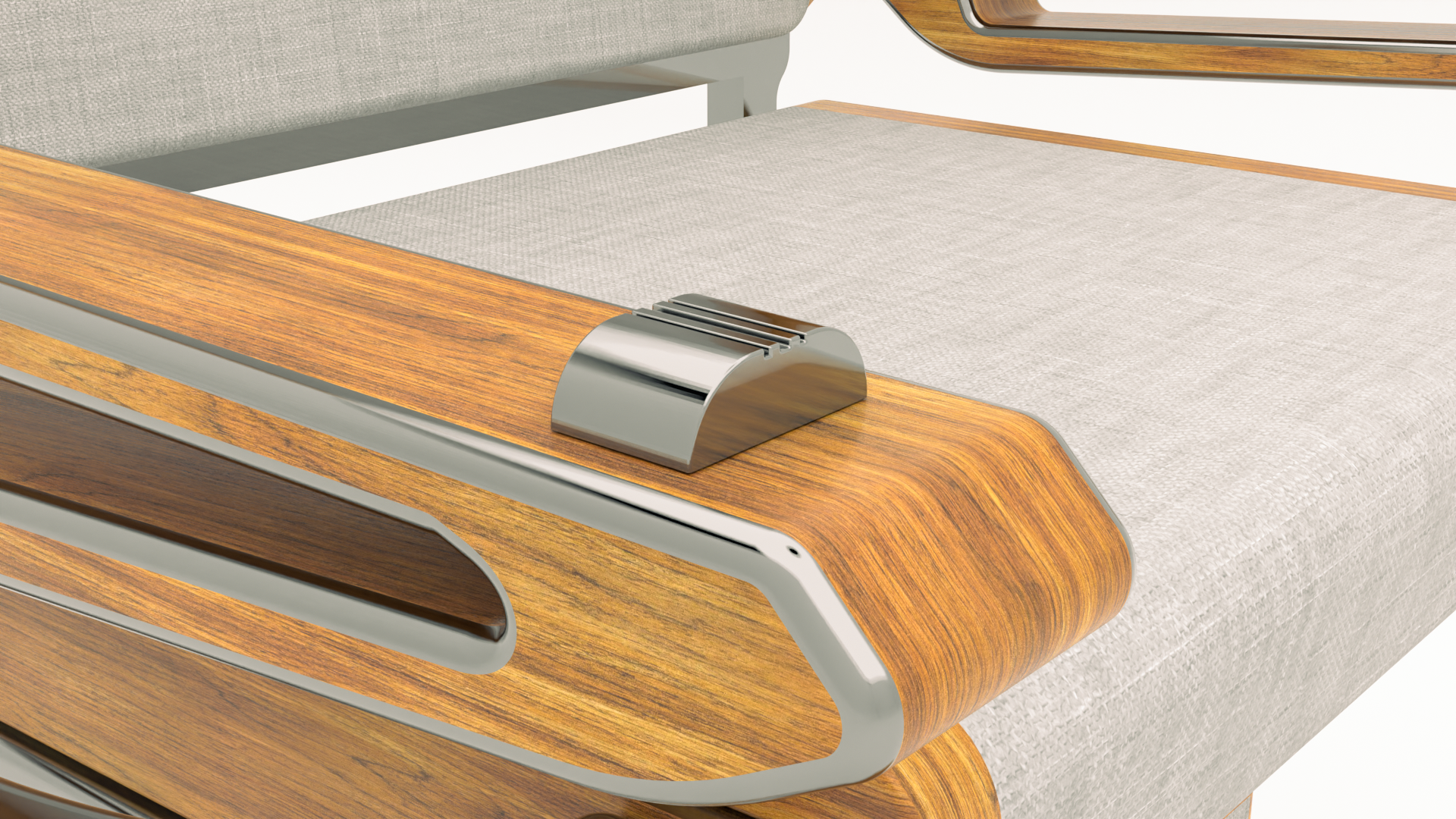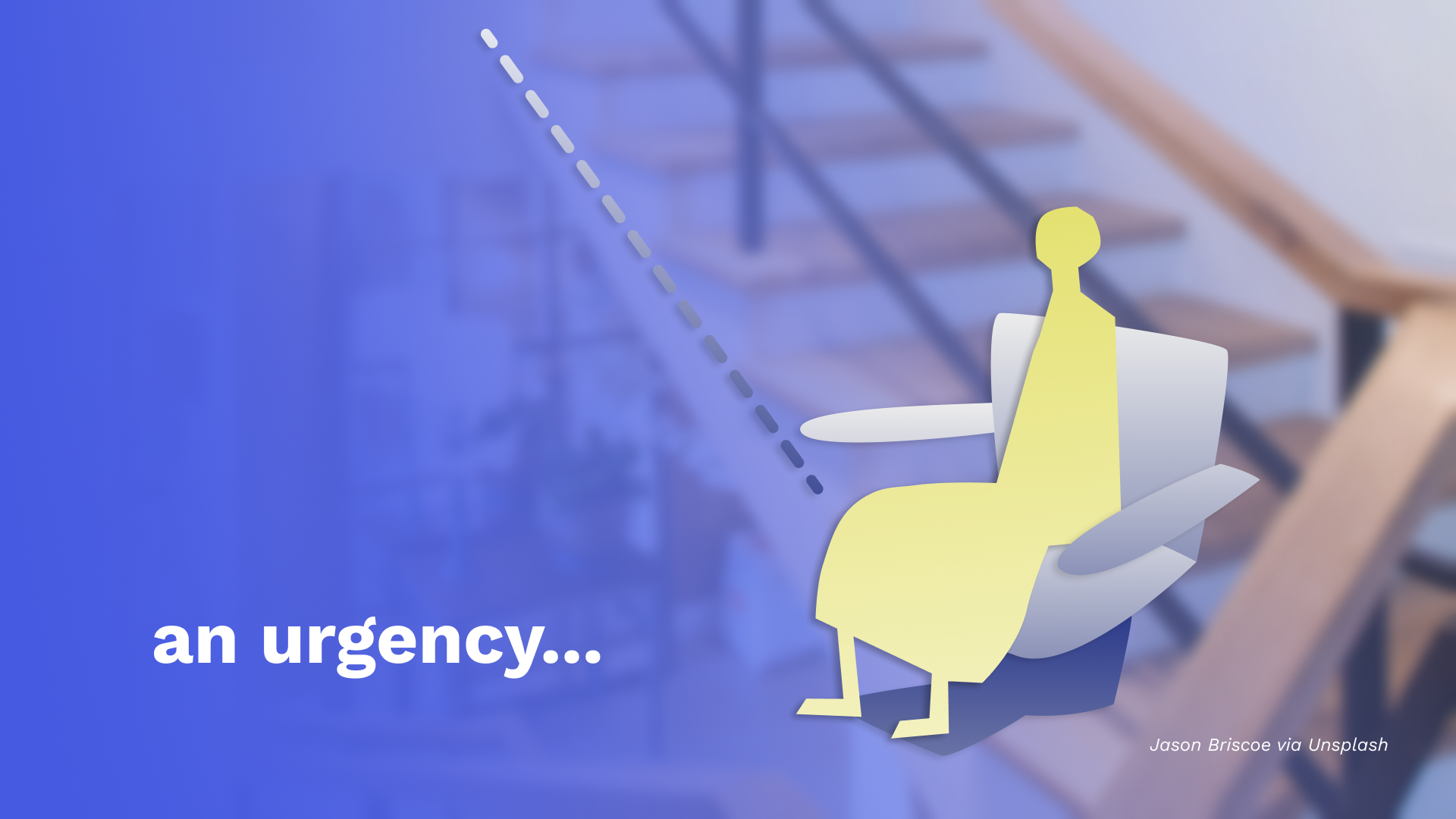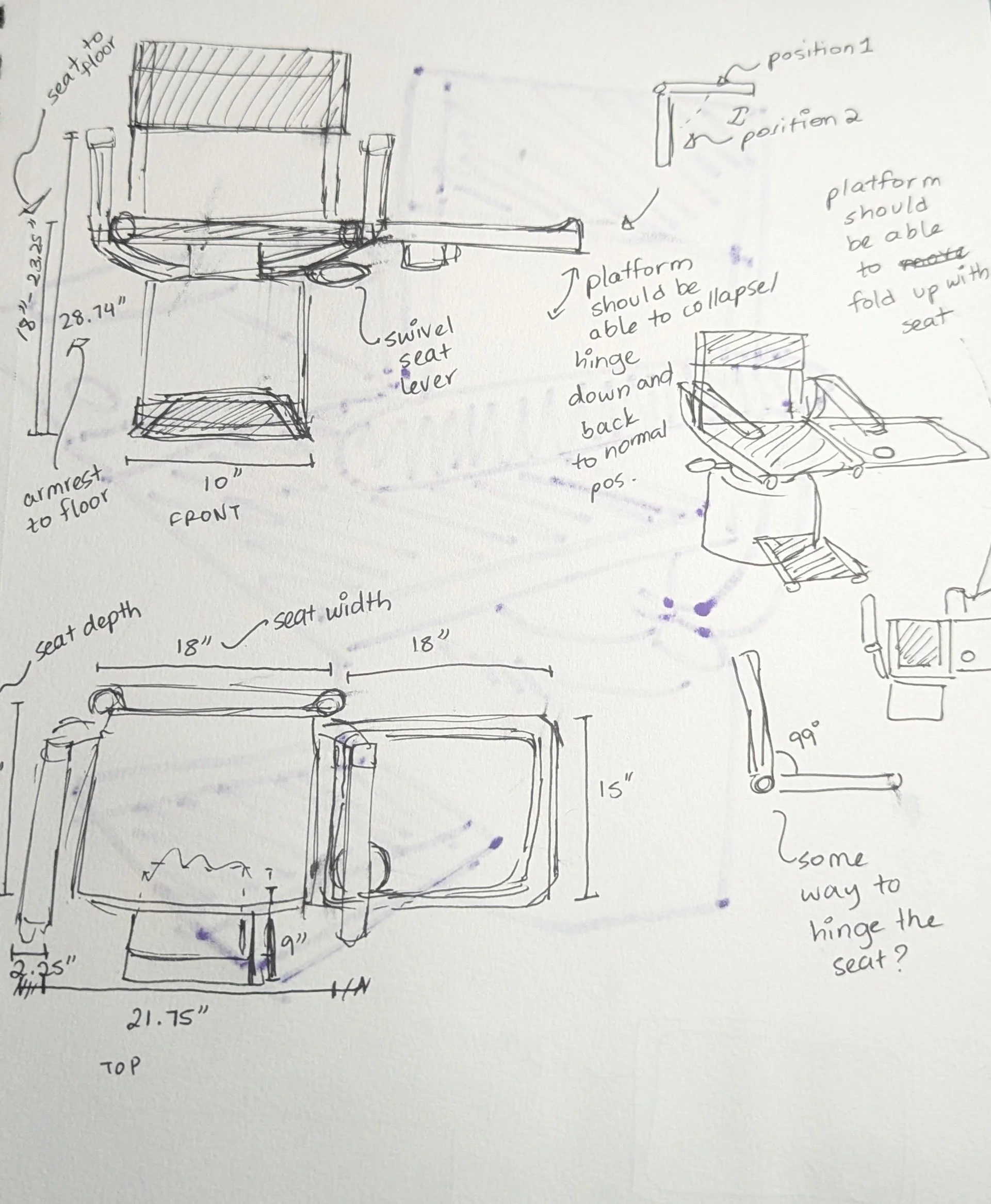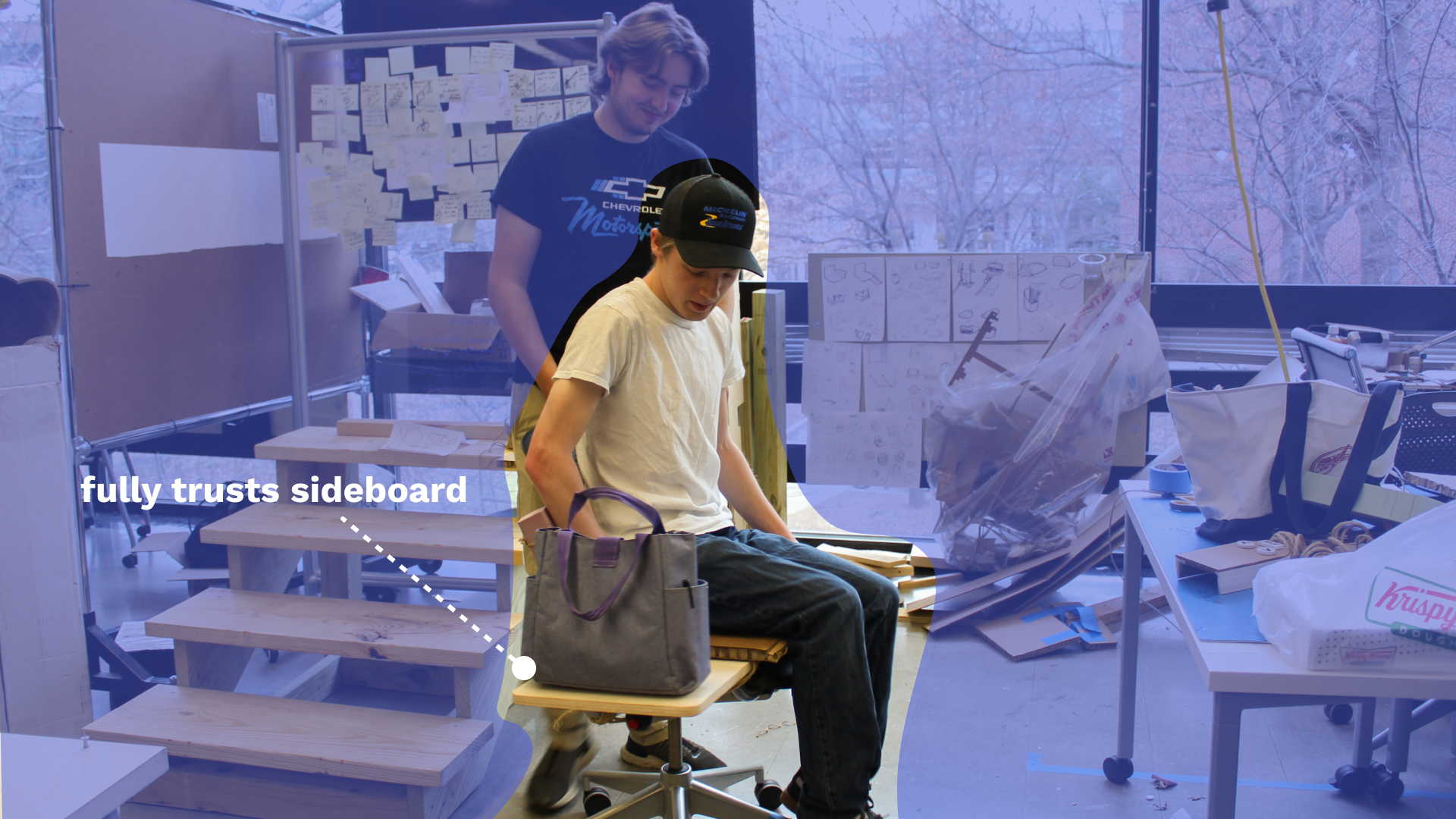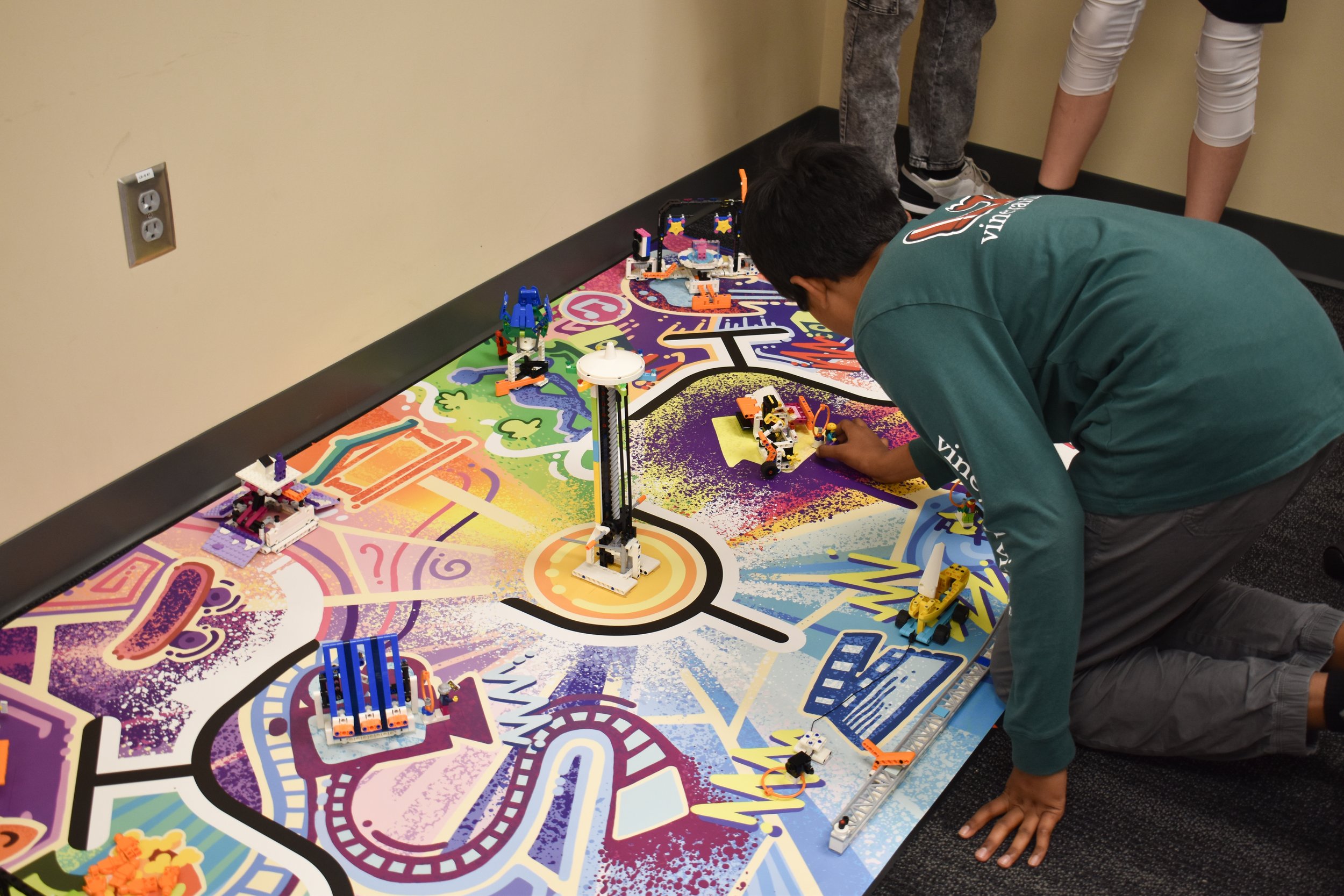TRADITIONAL PRODUCT DESIGN
HUMAN FACTORS + ERGONOMICS
DESIGN RESEARCH
Perch
3D Model + Render Courtesy of Anuska Giri
Spring 2025 ID x ME Collab Studio Project Sponsored by Cooper Carry
Collaborators:
Anuska Giri
Emma Alexander
Daniel Webber
Evan Deeny
Evan Shaffer
Project Advisors:
Wayne Li
Bill Halter
Role:
Project Management
Design Research: Interviews + Data collection + Synthesis
Human Factors Research + Integration
Sketching + Sketch Models
Full-Scale Usability Prototyping + Testing
Graphic Design
Concept
VALUE PROPOSITION
Perch is a multi-functional stairlift designed to meet the evolving needs of multi-generational households. Perch’s features respond to both primary and secondary residents’ unmet needs without being significantly more expensive than existing market offerings. Featuring a retractable tray, Perch is able to carry personal items while a rider is seated in the chair. Additionally, the backrest folds into a platform to carry heavy loads such as laundry or luggage, transforming into a shared household asset.
3D Model Courtesy of Anuska Giri
Renders Courtesy of Evan Deeny
Swivel Seat
Full Collapsibility
Three-Way Rocker Switch
Introduction
CONTEXTUALIZING THE SPACE
Stairlifts are devices which take a person or seated object up and down the stairs. So, who buys stairlifts? Often, it’s a family making the purchase, particularly after a major accident or health concern. It is not something that is always planned for.
Our main stage is a multi-generational home. Within this household, we can think of the residents in terms of a hierarchy: The primary resident is an aging adult or an individual with disabilities. Secondary residents might be a partner or family member who shares the living space.
Once residents connect with a franchise, sales representatives step in as key actors as they are intermediaries between manufacturers and customers. These representatives visit the residents’ homes to pitch their offerings and quote prices.
PROBLEM
For the primary resident, a stairlift means access—to spaces, to routines, to a sense of autonomy. And for the secondary resident, this is more than a device to help their loved ones regain independence—it is a permanent fixture in their home, forever changing the way they navigate spaces.
Opportunity…
There is opportunity to serve not just the primary resident, but also meet the untapped needs of the secondary residents. That got us thinking: What if this wasn’t just a stairlift? What if it was a shared tool, beautifully designed for everyone who lives in the home, primary and secondary residents alike? We saw the opportunity to reimagine it around a FAMILY’S needs, adding value to all members of a household. A solution that adapts to your life—not the other way around.
Design Process Overview
PRIMARY RESEARCH
We conducted several interviews with stairlift owners as well as with a stairlift salesman to better understand the product as it stands. This led us to discovering there is a huge service design opportunity that could be explored in further iterations of the project. Major service pain points were during the research phase of making a stairlift purchase. The major product pain points which we chose to focus on involved the secondary resident, and the limited load carrying capabilities.
USER JOURNEY HIGHLIGHTS
MARKET RESEARCH
Simultaneously, we conducted a market whitespace analysis to identify where the market gaps were. The market leans toward mass appeal and generalization but prices veer toward being high end. This is without much differentiation in features, indicating an opportunity for disruptive innovation.
DESIGN STATEMENT + OBJECTIVES
JOURNEY TOUCHPOINTS
After selecting key points in the journey, we conducted several rounds of form and feature development through ideation sketches and sketch models, eventually leading to our final concept direction. This was a cyclical process, but is represented linearly for clarity.
IDEATION
SPECIFICATIONS
Our design specifications are based on research papers and interviews as well as usability studies on our preliminary prototypes.
PROTOTYPE EVALUATION
Our evaluation process included usability testing with low fidelity prototypes (based on our specifications) to understand certain interactions with features and controls. Additionally, we surveyed 100 people in our target demographic to understand if the design had potential or value for them. Lastly, we evaluated the designs with one of our key interviewees, who provided further insights about our concept direction.
FINAL CONCEPT DIRECTION



